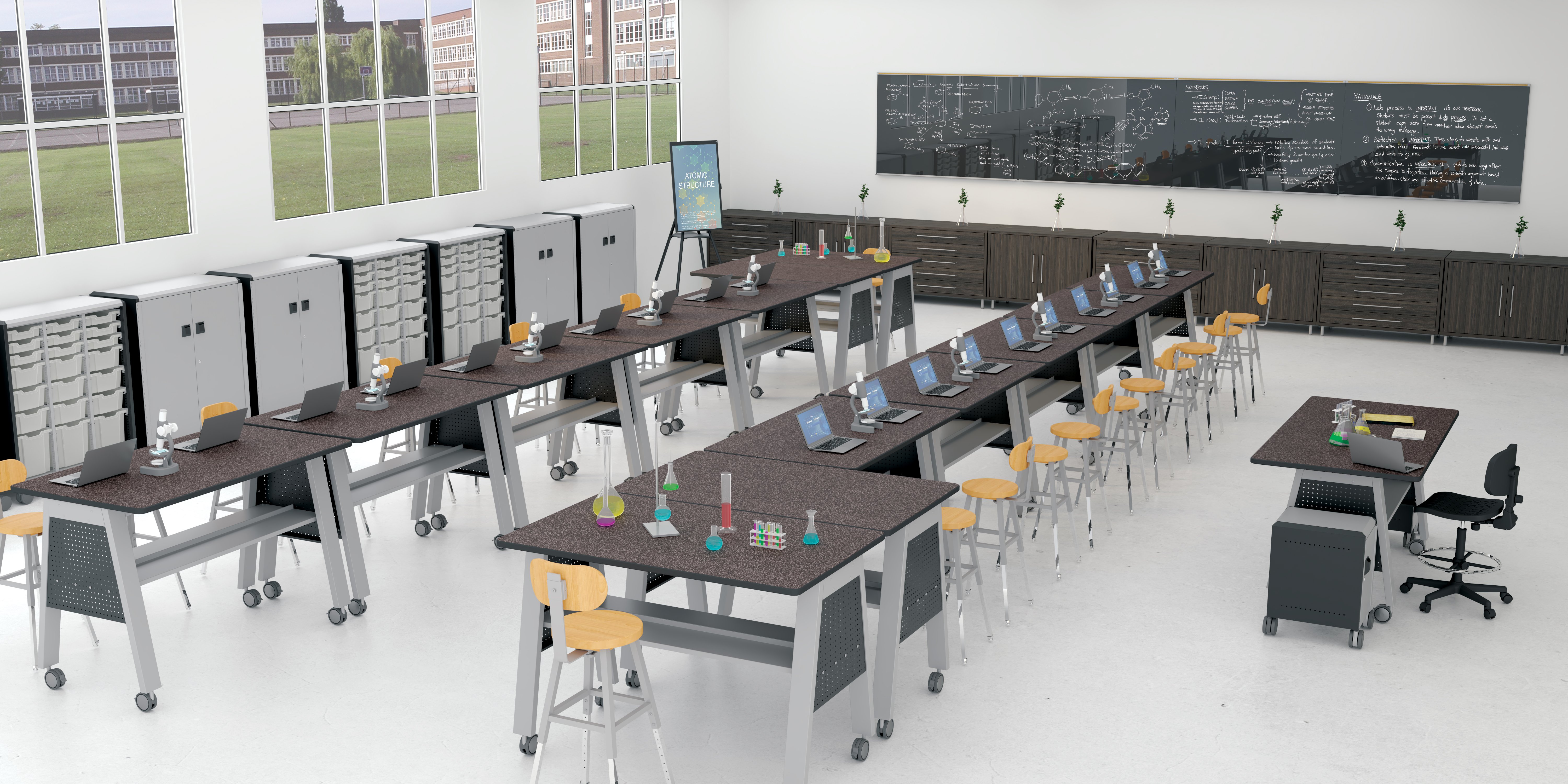How to Incorporate CTE and Experiential Learning into Educational and Professional Workspaces
Posted by MooreCo Inc on Oct 10, 2022 3:50:56 PM
Career and Technical Education (CTE) is not a new concept, but it has yet to be widely explored in all career fields and realms. The process of experiential learning, or learning by doing, is prevalent in medical programs, artistic endeavors, and internships, to name a few, better equipping Gen Z students to embark on the career path they are seeking. MooreCo is ready to prioritize CTE and design spaces that are well-equipped for experiential learning. When CTE environments are designed with Compass Makerspace Tables and Compass Cabinets at the helm, Gen Z students have ample room to keep all necessary tools nearby as they explore group and individual projects. Compass Cabinets and Makerspace Tables inspire Gen Z students to think bigger, get their hands dirty, and create something new.

What is CTE?
Career and Technical Education (CTE) allows Gen Z students to test out future career paths by actually doing the job they’re interested in before they pursue higher education for it. As opposed to traditional learning methods, which encourage reading, researching, and presenting information on a topic before entering the field (I.e., medical programs), these career training environments encourage learning by doing, even going so far as to encourage the making of mistakes for growth to occur. A healthy approach to what comes next after high school or college, CTE allows Gen Z students to adopt new skills that give them a stronger footing to help them attain jobs. CTE also has many DEI benefits, as it allows Gen Z students to enter a space that is full of new experiences and mingles groups of people with varying backgrounds, skills, and knowledge. Gen Z is very entrepreneurial and tends to be more willing to learn new skills through DIY methods. In fact, nearly 60 percent of Gen Z-ers prefer YouTube as a learning tool to traditional ways. Since Gen Z already learns by doing, CTE environments are ideal spaces for them to assimilate into as they enter higher education and the workforce.
What is Experiential Learning?
Essentially a broader category even than CTE, experiential learning involves learning by doing and developing skills by actively engaging in hands-on experiences. When we take learning beyond the classroom, Gen Z students can pick up and build on real-world skills through the process of being in real-world situations. This could look like taking students to a public forum instead of reading about civil engagement or giving nursing students face-to-face interaction with their patients. According to Kent State University, engaging in experiential learning gives Gen Z students about to enter the workforce the benefit of understanding course material on a deeper level. They are inspired to seek out their own skills, interests, passions, and values, including leadership abilities and self-confidence, as well as broadening their own worldview and sense of community. Experiential learning also presents opportunities to collaborate with and learn from a diversity of organizations to develop positive professional skills and explore career options.

How does CTE currently function in educational and professional spaces?
CTE and experiential learning: the two go hand in hand. Experiential learning is what happens inside of CTE, educational and professional spaces designed specifically to help Gen Z students learn new skills and get hands-on experience within varying interests. Research at Kent State University shows that our modern education system currently engages students in experiential learning through courses and non-courses, including community service, service learning, undergraduate research, study abroad, and career-focused development like internships, student teaching, capstone projects, and so much more. Setting up spaces like this should include design elements like the Compass Cabinets, which provide a dreamy amount of storage space for tools that students can access and experiment with at any time.
Experiential learning in CTE environments equips Gen Z students with the tools they need to prepare for the future, including critical thinking, problem solving, collaboration, conflict resolution, and addressing challenges. The transition from high school to college and college to graduate school are huge leaps that require some knowledge of the career path that student wants to pursue. Giving Gen Z students active, hands-on experience in the classroom and beyond before they enter these higher education spaces gives them a better understanding of what their desired career path actually entails and a base skill level upon which to enter their first job in that field. Having Compass Makerspace Tables in the room and equipped with peg side panels and shelving really sets Gen Z students up for success, giving them ample storage space to keep all necessary tools nearby.
Multipurpose rooms are a great way to introduce CTE in a professional or educational setting. Having multiple subjects approached in any one environment allows students to experiment with several options to explore. MooreCo is spearheading product lines that will revolutionize the way CTE environments are set up. Compass Makerspace Tables are an ideal fit into any scholastic or professional CTE environment because they provide ample space to spread out and keep even deep work organized and close at hand. Students in STEM or art programs will love the way Compass Makerspace Tables allow plenty of room to get creative, test out new theories, and make mistakes in order to learn and grow from them.
Topics: Collaboration, Design, Human Development, Diversity, Equity, and Inclusion, MooreCo Workplace, Compass, Higher Education, CTE, Experiential Learning
